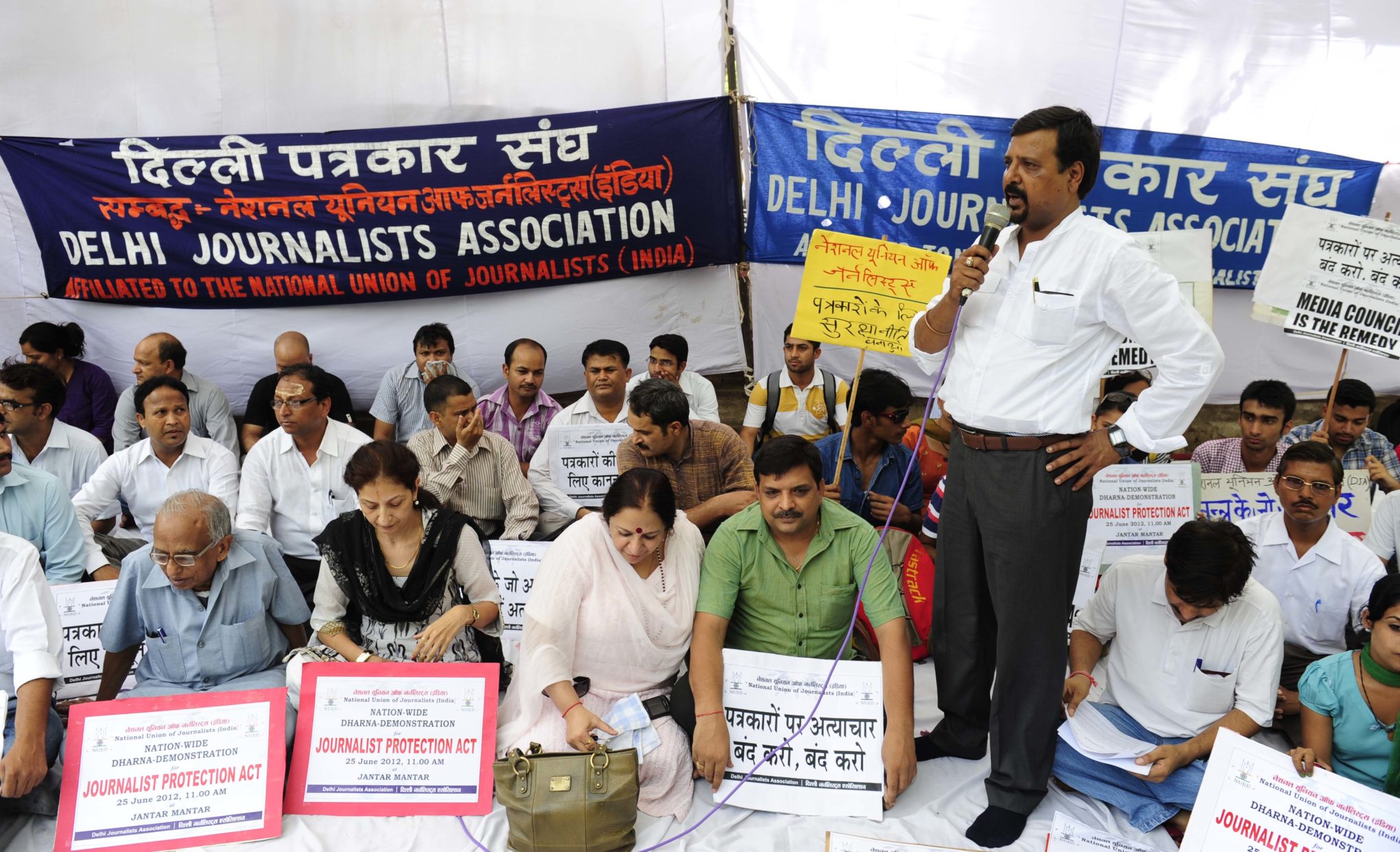Retired people from newspaper companies and organisations were never granted proper salaries in their prime time of life. Having craftily ensured low salaries to these essential staff, the management of these newspaper companies also created a debt-trap so that these expert hands could not leave the organisations to join better employment. The debt-trap came in the form of credit and thrift societies, which advanced loans against low interests to employees to run their day to day life and rentals, as their low salaries were already debited against long-time loans taken for sheer survival in ever-growing market prices. A report for Different Truths.
 The anxiety of the Finance Minister and the Prime Minister about periodically raising salaries and perks of the government employees is well understood because they cannot afford to keep a very large segment of working force in the government unhappy for long when the governance is in the bargain. Not only the current cabinet, the earlier cabinets also did the same using just different phraseologies. It is because each government has to worry about this segment of people who would be required to carry out its programmes.
The anxiety of the Finance Minister and the Prime Minister about periodically raising salaries and perks of the government employees is well understood because they cannot afford to keep a very large segment of working force in the government unhappy for long when the governance is in the bargain. Not only the current cabinet, the earlier cabinets also did the same using just different phraseologies. It is because each government has to worry about this segment of people who would be required to carry out its programmes.
But never once they care to look into the ordeals of lack of protection being suffered by the retired people in the marginal strata and from certain private sector companies, including those who spent their lives in newspaper industry but are ruled to retire at comparatively capable age of 58 in this country, (to suit the selfish agenda of the management or owners).
There is an Atal Pension Yojana created as a family pension by the Employees’ Provident Fund Commission, which grants a little over Rs 1,000 and below Rs 1,500 per month to such retired people. This Yojana is linked to the EPF-95 scheme of the EPFO. This amount remains constant year after year, even as the cost of living always moves upward and mobile, with life expectancy growing, salute to the modern medical practices in the country. There is no rise in the constant amount even as dearness in living goes up every other month.
The Finance Minister and the Prime Minister would do plausible jobs for the grassroots by linking this pension to the dearness allowance, as they do in the government and organised sector employees’ cases, and, by re-employing the physically and intellectually capable among this segment of pensioners so to contribute to the economy. These two steps are possible.
 Looking back, retired people from newspaper companies and organisations were never granted proper salaries in their prime time of life, nor even granted the full entitlements according to the government-granted wage boards’ recommendations, with one pretext or another, even as they were always unavoidable essential staff to run the daily production of the newspapers, both editorially and technically. Having craftily ensured low salaries to these essential staff, the management of these newspaper companies also created a debt-trap so that these expert hands could not leave the organisations to join better employments. The debt-trap came in the form of credit and thrift societies, which advanced loans against low interests to employees to run their day to day life and rentals, as their low salaries were already debited against long-time loans taken for sheer survival in ever-growing market prices. These loans were also compounded and never really repaid during the tenure of their employment but were adjusted only at retirement against their provident fund and gratuity dues.
Looking back, retired people from newspaper companies and organisations were never granted proper salaries in their prime time of life, nor even granted the full entitlements according to the government-granted wage boards’ recommendations, with one pretext or another, even as they were always unavoidable essential staff to run the daily production of the newspapers, both editorially and technically. Having craftily ensured low salaries to these essential staff, the management of these newspaper companies also created a debt-trap so that these expert hands could not leave the organisations to join better employments. The debt-trap came in the form of credit and thrift societies, which advanced loans against low interests to employees to run their day to day life and rentals, as their low salaries were already debited against long-time loans taken for sheer survival in ever-growing market prices. These loans were also compounded and never really repaid during the tenure of their employment but were adjusted only at retirement against their provident fund and gratuity dues.
The newspaper employees who were not covered by, or chose to go out of wage boards to avoid the unruly ruckus of cultured unionism and to pursue careers for excellence, suffered even more miserable working life than their unionised brethren covered by the wage boards. They were not given respite, even after coming out of the dragnet of unionism, from the management’s discriminatory treatment. Such employees’ professional (and thus financial) growth has always been stunted and even denied year after year with one pretext or another to suit the favoured recruits of the management. Though these employees were trusted hands and, therefore, unavoidable, yet their merits were never rewarded with the intention to accommodate the connected aspirants from the civil society. Thus a majority of them started at a post in employment and retired in the same post after completion of their 58th year. They worked amid penury and left the organisation in penury. Post-retirement, both these groups of citizens have only inflated the grassroots of disadvantaged citizen-groups of India.
The news organisations use all their clouts in political parties, governments, and bureaucracy to defer or suppress a wage board before the declaration when every ten years it is in the offing. Not only this, even after the grants of the wage boards by the judiciary, some influential companies continuously try to influence the government and members of parliament to scale down the awards already granted to the newspaper journalists and employees by the wage boards.
 This has been the history of independent India’s Fourth Estate – ruled, governed and managed by some influential selfish families of the country. This practice continues, because of the continued absence of clean policies of the governments of the newspapers and news organisations. This situation can be bettered, with a view to making the Fourth Estate truly non-committal, meaningful and trustworthy, giving democracy its real vibrant structure in the country, only by putting all these news organization into public trusteeships. Resultantly, except a very few chosen journalists and non-journalist employees, the majority of the news organisations’ staff suffer the ordeals of retirement at a capable age in the thick of pecuniary hardship for the rest of their life.
This has been the history of independent India’s Fourth Estate – ruled, governed and managed by some influential selfish families of the country. This practice continues, because of the continued absence of clean policies of the governments of the newspapers and news organisations. This situation can be bettered, with a view to making the Fourth Estate truly non-committal, meaningful and trustworthy, giving democracy its real vibrant structure in the country, only by putting all these news organization into public trusteeships. Resultantly, except a very few chosen journalists and non-journalist employees, the majority of the news organisations’ staff suffer the ordeals of retirement at a capable age in the thick of pecuniary hardship for the rest of their life.
Even the current arrangement of this meagre pension (Rs 1,000 to Rs 1,500) needs a progressive look. It is required to be re-instituted every November but is stopped either for Aadhaar compliance or other issues. The government has created a system of acquiring the Digital Life Certificate (DLC), besides Aadhaar linking to the accounts of the pensioners under the EPW-95 scheme. According to one of these agents, the software and the processing have been made so cumbersome and complex that most of such agents have stopped working for the DLC.
Surojit Mahalanobis
©IPA Service
Photos from the Internet
#Pension #Elderly #JournalistEmployees #Aadhaar #DigitalLifeCertificate #FinanceMinister #ChiefMinister #ProvidentFundCommission #AtalPensionYojana #Newspapers #SalariesOfJournalist #IPA #DifferentTruths





 By
By


 By
By